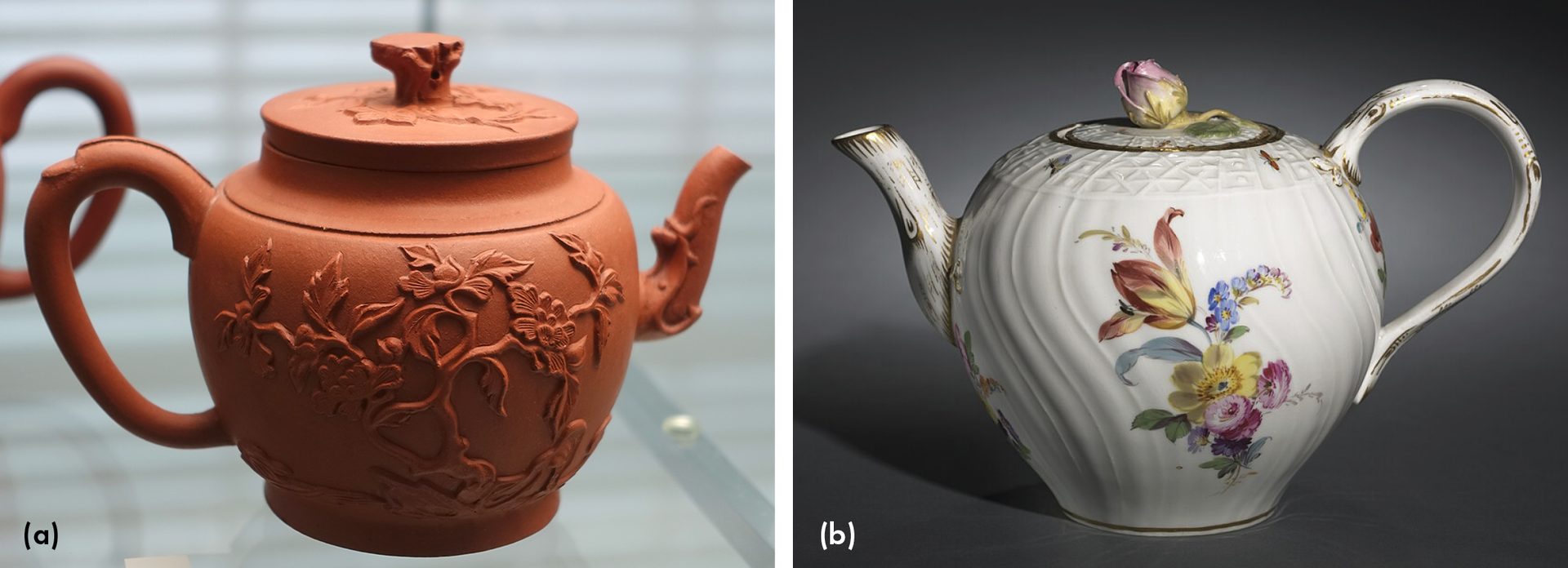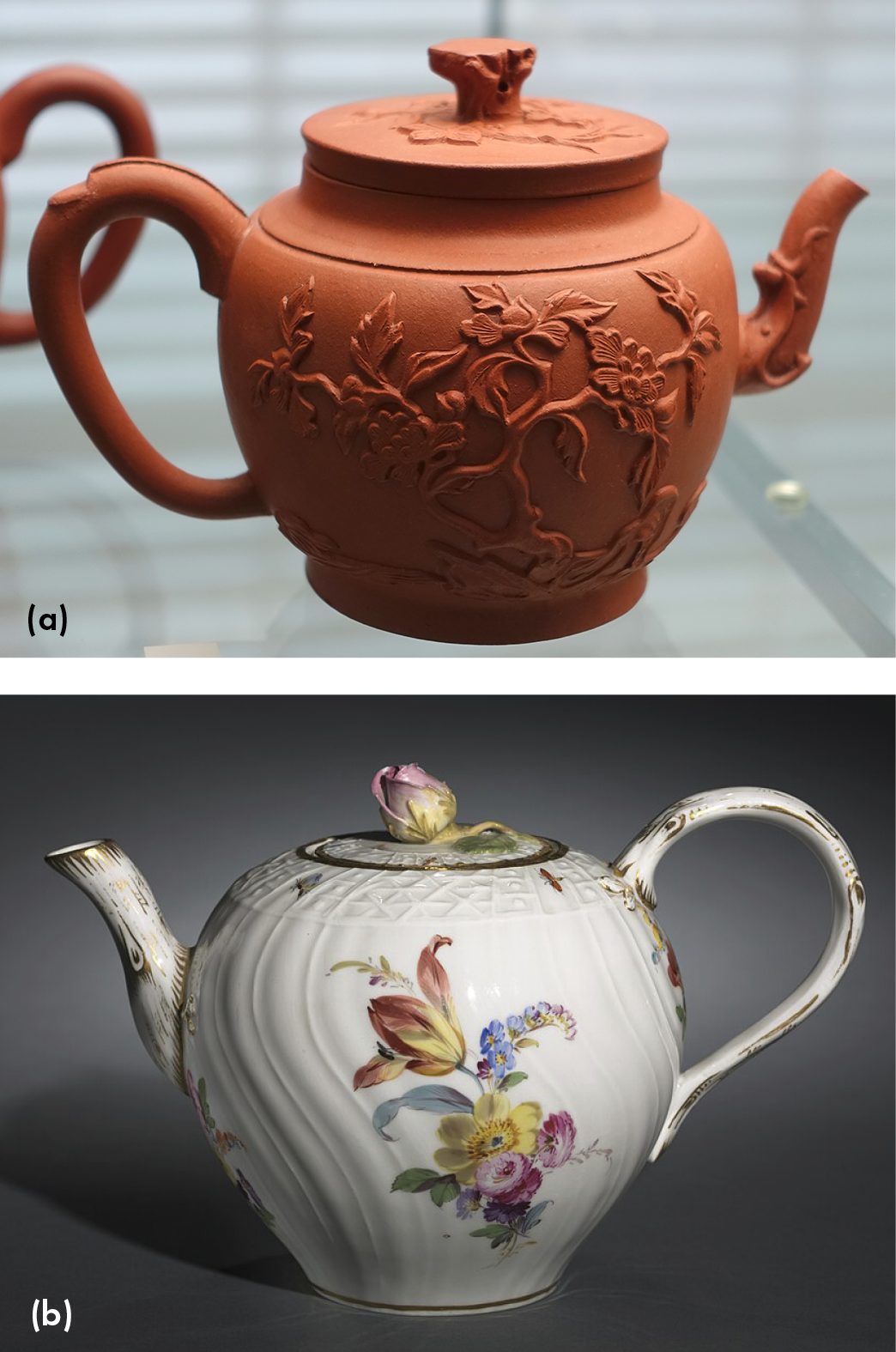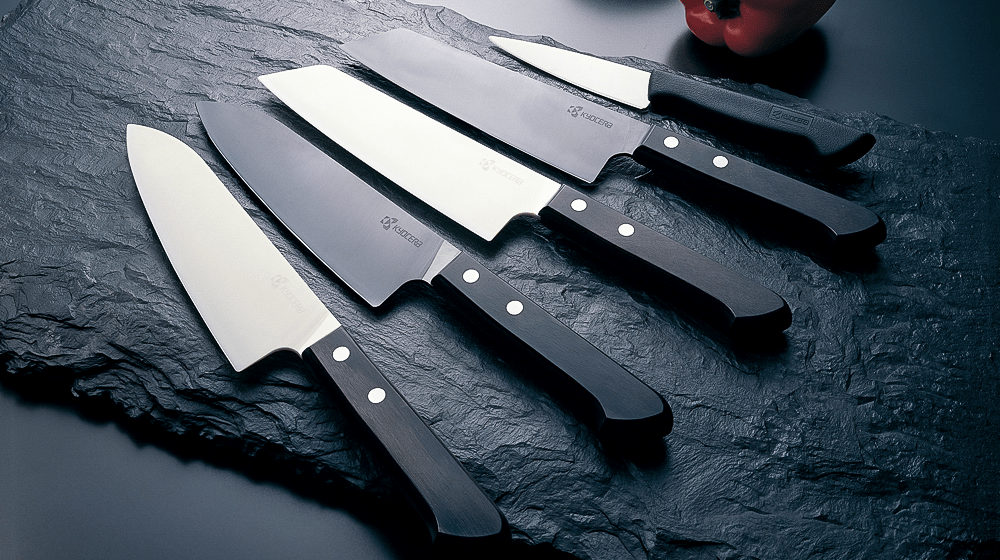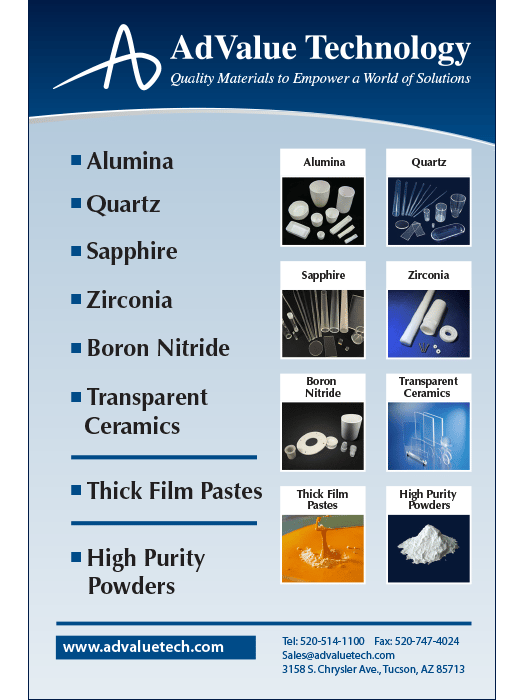Holistic health:
Nutrition and weight management
bulletin | cover feature
With a global market valued at $685.5 billion in 2023, nutrition and weight management account for a substantial share of the health and wellness industry, at 10.8% of the total. This segment is also forecast to have healthy growth during the next five years with an 8.1% CAGR.8,9
Since ancient times, ceramics and glass have contributed to the preparation of healthy, natural, and nutritious foods and have also played a very important role in their conservation and safety. Cookware made from earthenware, stoneware, porcelain, and flameware can be found in virtually every kitchen (Table 3).31
Earthenware is the oldest type of pottery and is made from common clay. Sintered at low temperatures (between 950°C and 1,100°C), it is porous as well as lightweight and fragile. It is suitable for cooking at low or medium heat and can be used for slow cooking of delicate foods (e.g., gravy and sauces) or to sauté or stew vegetables and meats.
Earthenware holds an important role in many ethnic cuisines. Mediterranean fish soups, Balkan ghivetch (vegetable stew), Chinese clay pot rice (a mix of rice, meat, seafood, and vegetables), and Japanese shabu-shabu (thinly sliced meat with vegetables) are just a few examples of dishes that get their qualities from clay pot cooking. Traditional Dahi, or Indian yogurt, is prepared in a clay pot. Thanks to the capability of the porous earthenware to absorb water, the cultured milk transforms into a thick, creamy, and delicious curd.
Stoneware (Figure 4a), unlike earthenware, is manufactured from fire and ball clays (i.e., kaolinitic clays) and sintered at higher temperatures (between 1,180°C and 1,250°C). Thus, it is less porous, has a low absorbency rate (i.e., does not absorb its contents), and cooks evenly.
Porcelain (Figure 4b) is made primarily from kaolin, quartz, and feldspar and is sintered between 1,200°C and 1,450°C, obtaining a ceramic that is white, translucent, very hard, and highly dense. It has a natural nonstick surface, and these impressive properties makes porcelain more expensive than earthenware and stoneware.
Flameware is a relatively modern ceramic cookware product that is specially formulated to withstand the thermal shock of heating directly on a stovetop. Because of the diligent testing required to ensure safety, only a few clay manufacturers make flameware products, for example, Xtrema (Hagerstown, Md.), which specializes in pots that are 100% flameware, including the handles.
As explained by Erik Bergstrom, digital media manager at Xtrema, in an Xtrema blog post, Xtrema nonstick surfaces are more durable than traditional coated nonstick pans because the flameware is made of one solid ceramic piece. As such, there is no risk of the coating wearing away and exposing an underlying metal surface.32


Figure 4. Examples of stoneware and porcelain. a) Böttger stoneware teapot, b) Meissen porcelain teapot.
Credits: a) Public domain image, in the collection at Germanisches Nationalmuseum. b) Public domain image, in the collection at Cleveland Museum of Art.
“Many cookware materials contain harsh chemicals such as heavy metals, which can pose a risk to your family’s health. For example, unlined copper pans can react with acidic foods like tomatoes or leach copper into your food,” he says. “Pure ceramic is nonreactive and nontoxic, so it’s completely safe for handling food. Without a metal core, there’s no risk of metals leaching into your dishes.”
The company’s products are microwave and dishwasher safe, and they can be used on glass, electric, or gas stoves, as well as in regular ovens, toaster ovens, grills, and also in campfires and open fires.
Safety cannot be neglected when preparing food. Materials selection must be aimed at preventing transfer or leaching of chemicals from the pot to the meal. For this reason, more attention is being paid to eliminating potentially toxic compounds from ceramic glazes, such as lead and cadmium.
Also in recent years, nonstick cookware based on ceramic coatings has grown as a popular alternative to the traditional nonstick pans coated with per- and polyfluoroalkyl (PFAS) chemicals, which are known to cause serious health issues if inhaled or consumed following degradation of the coating. Advanced nonstick ceramic coatings have been enabled by the introduction of nanomaterials, such as silica and titania nanoparticles and nanoclays.
Ceramic tableware is evolving toward becoming not only more functional but also serving as a way to bring art to food. Potters are coordinating with chefs to create bowls, dishes, and other utensils that enhance food appearance while being in harmony with the atmosphere of the dining area and its ethnic or cultural setting.33
Besides cookware and tableware, ceramics are present in the kitchen in other forms. Kyocera (Kyoto, Japan), for example, is well-known for producing ceramic kitchen knives (Figure 5).
Ceramic tiles find application not only as flooring material but also for walls, countertops, and backsplashes. Porcelain slab countertops are being used to replace granite and engineered stone and represent the fastest growing segment of the U.S. countertop market.34
Figure 6. The Schott CERAN brand of glass-ceramic cooktops has been named Brand of the Century four times by the ZEIT publishing group, in 2013, 2016, 2019, and 2022.
Credit: Schott

Figure 5. A sampling of the ceramic kitchen knives produced by Kyocera.
Credit: Kyocera

Florim (Fiorano Modenese, Italy), for instance, produces porcelain tiles and slabs as large as 63 inches by 125 inches, with thickness up to 2 cm. These tiles and slabs come in different textural effects (e.g., marble, stone, wood, and metal), colors, and styles (e.g., classic, retro, and futuristic).35
In addition to ceramics, glass is very common in the kitchen, and not just as drinking glasses and bottles made from soda–lime–silica formulations. For example, though much of today’s glass bakeware is thermally strengthened soda–lime–silica glass, some manufacturers, mostly from outside the U.S., still manufacture borosilicate glass bakeware. Borosilicate glass is a material characterized by a low coefficient of thermal expansion, good chemical resistance, and higher melting point than soda–lime–silica glass.
Corning pioneered glass-ceramic bakeware with the CorningWare product line following S. Donald Stookey’s discovery of recrystallization in the lithium silicate glass system in the 1950s. Today, glass-ceramics also find use as flat cooktops, which are used to transfer heat from radiant or induction burners. Glass-ceramic cooktops are gaining increasing market share as more consumers convert from gas stoves to avoid relying on fossil fuels. Schott (Mainz, Germany) is a major player in this area (Figure 6).
Induction cooktops are gaining in popularity because they are more energy efficient than other types of stoves, heat faster, and their response time to temperature adjustments is shorter. They consist of an electric coil placed below the cooktop that creates an electromagnetic field, which interacts with the magnetic cookware to generate heat.
The main drawback of induction cooktops is that cookware used on it must be magnetic, which means that only some types of cookware are suitable for this type of burner, such as cast iron (with and without enamel) and stainless steel with low nickel content. Aluminum, copper, glass, and ceramic cookware cannot be used with induction cooktops.
At the present time, induction cooktops have a share of only 8% of the total cooktop and range market,36 with global revenues estimated to reach $24.1 billion in 2023. But their sales are forecast to rise at a healthy CAGR of 8.3% through 2028.37 To take advantage of this market growth, some producers of porcelain slabs, such as SapienStone, a subsidiary of Iris Ceramica Group (Fiorano Modenese, Italy), are integrating induction cooktops into their slabs.
Ceramic materials are also used as additives in food. For example, titanium dioxide is used to enhance the white color or opacity of food products. Silicon dioxide is added to serve as an anticaking agent (avoid clumping).
Read more of the cover feature with each of the links below, or CLICK HERE to navigate to the next section in this article.
- Factors driving demand in the health and wellness industry
- Sport, fitness, and recreational activities
- Traditional, complementary, preventive, and personalized medicine
- Wellness tourism
- Nutrition and weight management
- Beauty and personal care
- Wellness real estate
- Mental and spiritual wellbeing
- Workplace wellness
